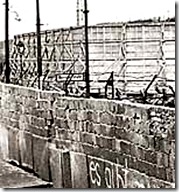Subsidies? Well, yes, but make them smart subsidies
Nigeria: Subsidising
the neighbours
Nigeria’s Central Bank Governor, Sanusi Lamidi Sanusi, had a problem. In a recent live interview with the Aljazeera TV, he said that his country had to raise the retail prices of all petroleum products to match the rising international prices, despite the violent and massive public protests against that move. That was because Nigeria could not afford to subsidise them anymore though Nigeria is a leading petroleum-producing country and a net exporter of that commodity.
“We had fixed the retail prices of petroleum prices in Nigeria when the international price of crude oil was $ 50 a barrel,” he said. “But the international prices are around $ 110 a barrel now and we still supply petroleum products at the original prices” Then, he came out with his problem, a problem which he raised as an economist and not as a politician. “This was a huge burden on the Nigerian government’s budget because that money could have been used for developing the basic infrastructure of Nigeria which is now far from desired. But the major problem was something else. In all the neighbouring countries where the petroleum prices were at the current international level, it became a very profitable business for some groups to buy those products at the subsidised prices in Nigeria and smuggle the same to those countries and sell still at a lower price than the international prices. So, the demand for petroleum products in Nigeria was higher than their normal level. The government’s subsidy requirements were therefore higher than what it would have otherwise been. Worst was that the Nigerian government was subsidising the petroleum consumers of neighbouring countries as well”
Governor Sanusi’s explanation was the official justification of the government’s decision to raise the retail prices of petroleum products in the market and response to the massive and bloody protests that had brought Nigeria’s economy to a halt.
Sri Lanka: Making money by selling subsidised rice
Nigeria is not alone in this predicament. In all the countries where unmanaged and uncontrolled subsidies have been extended by governments in good public spirit, there had been similar unintended consequences and wastage of scarce resources of the countries concerned. In Sri Lanka, prior to 1977, every citizen of the country, irrespective of the income level, had been supplied with two measures of rice, equal to about two kilograms, at a highly subsidised price. The objective of the government in doing so was noble: Eliminate hunger amongst the poor by supplying them with their staple food. But this system engendered a thriving underground market in which traders started to buy subsidised rice from the franchise holders by making a payment to them and supply the same to hotels in the city where there was a high price for rice in the open market. So, both the poor and the rich got the opportunity of earning an additional income through the subsidy scheme which economists call ‘earning a rent’ meaning that it was earned not by making a worthwhile contribution to the economy but by using the available control and regulatory systems. So, the government wanted people to consume rice. Instead, they made money out of it and spent on other needs.
Fishermen’s demand: Reduce prices or no fishing anymore
After the fuel prices were increased by a significant margin in Sri Lanka recently, there were spontaneous agitations calling for reducing them to the original price levels. The fishermen on the North Western coast of Sri Lanka refused to accept the subsidy that was offered to them by the government on the fear that that subsidy was a temporary measure to placate them and would not be continued. They refused to take their boats to sea until the government met their demand. Similar demands were made by others like three-wheeler taxi men, lorry owners and school van operators. This was not what they were supposed to do because, if their costs had increased due to the fuel price hike, they should have hiked the prices of their individual products as well to compensate for the cost increases. The objective of the fuel price increase by the government was to discourage the excessive use of petroleum products by both consumers and producers and thereby check on the growth of the fuel bill of the country. Economists call this allowing a ‘pass-through’ of the price increase to the rest of the economy forcing everyone to make a painful but necessary adjustment to their consumption pattern. This adjustment is exactly what is needed in Sri Lanka today where everyone, including the government, is notorious for over-consuming beyond their means. Both the private bus operators and the Ceylon Electricity Board in the very first instance and lorry owners subsequently made this pass through by raising bus fares, electricity tariffs and lorry hiring charges, respectively, in line with the increase in the fuel prices.
A price pass-through is not necessarily inflationary
Many have feared that such a pass through will raise the cost of living and contribute to high future inflation. This argument is both right and ill-conceived. It is right because a fuel price increase raises the consumer prices and shrinks the basket of goods and services which a person could buy out of a given income. It in fact puts the poor and those earning fixed incomes to innumerable misery because they are now forced to tighten their belts beyond the minimum consumption needed to maintain them and their families. So, the painful adjustment which the price increase expects everyone to make falls squarely on them. However, this argument of long term inflation is ill-conceived because the initial increase in the cost of living will fizzle out pretty soon if the central bank does not increase money supply and allow the economy to increase its total aggregate demand through a liberal credit expansion. All other groups will be forced to accommodate the initial price increase through an improvement in productivity in the long run. This process which should naturally occur in the economy as per the objective of increasing fuel prices will short-circuit if the central bank allows credit to expand liberally, ostensibly to force-track economic growth beyond the country’s true growth potential. Such a liberal credit expansion, in the opinion of economists, is a subsidy to be extended by the central bank to the economy which a central bank is neither capable of doing nor supposed to do. It is not capable of doing it because merely through money creation it cannot influence people to work hard and deliver prosperity; it is not supposed to do so because it delays the adjustment needed and makes its own life painful.
Offer smart subsidies
to the poor Economists generally agree that the ultra-poor and the vulnerable need support in such an event to wade through the adjustment process successfully. Such support is generally delivered to them through a subsidy scheme, not just a general subsidy system, but a ‘smart subsidy system’.
The general subsidy schemes are not endorsed by economists due to several weaknesses inherent in them. A smart subsidy system is one that eliminates or minimises those inherent weaknesses.
What are the weaknesses in general subsidy systems?
Avoid unintended consequences
First, they generate unintended consequences throughout the economy. A subsidy is not free but paid for by someone else in the economy. For instance, if the government extended a cash subsidy to fishermen or, as demanded by them, reduced the prices of fuel to their original levels without a compensating reduction in costs in the Ceylon Petroleum Corporation or the Indian Oil Company, there are losses to be made by these suppliers. The Indian Oil Company can close shop and go home if these losses are mounting. But the Petroleum Corporation, being a public monopoly, cannot do so easily. It could for some time continue to operate by financing losses by borrowing from banks, especially from state banks. But sooner or later, the loss levels will become too high even for the banks to bear. At that stage, its losses have to be borne by ‘someone else’ and this someone else in this case is the government as its owner. The government has to pay for those losses by increasing taxes, or by cutting expenses elsewhere or by printing money or by increasing public debt. In the past, the government did so by taking over the debt of the Petroleum Corporation by issuing Treasury bonds to the two state banks which is a combination of both printing money (because it increases net credit to government by banks) and by raising public debt (because it adds to the total public debt of the country). Whatever the method of financing, it is an unintended consequence because in the first instance, it reduces the credit granting capacity of state banks to other customers and when the government takes over the debt later, it causes future inflation. A central bank cannot be happy about the Petroleum Corporation running at losses or its losses being financed through bank borrowing or, eventually, those losses being taken over by the government.
The Moral Hazard
Problem: Give subsidies and corrupt them too
Second, subsidies lead to a problem known as the ‘moral hazard problem’ in an economy. A moral hazard is simply a situation where, when one is supported by another without a commensurate sacrifice by the first one, the supported person has no incentive to work for gaining capacity for standing on his own feet one day and, in the absence of this quality, will become a greater burden to the person who chooses to support him. A good example is the case of a child whose home assignments are done by his mother out of pure love for him. But the child does not learn to do it by himself and, as a result, the mother will have to continue to do his assignments at a great burden to herself. This problem is not a new one and had been known for long. As preached by the Buddha in the Chakkavatthi Seehanada Sutra in the Dheegha Nikaya, a king, on being advised by his Ministers that people in his kingdom had resorted to theft and looting because they did not have enough money to undertake their own enterprises, had given them, out of sympathy, free capital from his treasury. After sometime, people had realised that they could get more money from the king if they engaged themselves in more theft and looting. So, instead of theft and looting subsiding, they had proliferated in his kingdom. So, uncontrolled subsidies, instead of helping people, perpetuate their misery and become a huge burden to the subsidy provider.
Adverse selection: Bad guys get together to be selected
Third, subsidies generate another problem called the ‘adverse selection’ problem by promoting people to flock to get the subsidy though they may not deserve to receive such a subsidy. If fishermen are given a ration of fuel, many will join the bandwagon of fishermen to get the benefit of the subsidy for them. The wrong signal given by the subsidy collects an underserving group together and the selection of that group by the government for granting the subsidy is adverse to the government right from the beginning. That is because the government comes under constant pressure by this group for enhancement and continuation of the subsidy. The subsidy is paid with a good intention, but it does not generate the expected results because it is used by people who have been adversely selected.
Have a timeline for exiting the subsidy
Fourth, subsidies, once granted, have the tendency of becoming a permanent feature in the system and at a later date, when it is no longer necessary to grant that subsidy, it will be difficult for the government to withdraw the same. One good example is the fertiliser subsidy granted to farmers in Sri Lanka. The advocates of the subsidy had justified it on the ground that it is not a waste of resources but an investment because it helps farmers to raise output by reducing their cost of production. However, the unlimited and untargeted subsidy ballooned when the international prices of fertiliser too ballooned since 2007. Accordingly, the fertiliser subsidy which was around Rs 3.6 billion in 2004 shot up to Rs 11 billion in 2007 and further to Rs 26 billion in 2008. It has remained around that level since then draining a significant portion of the country’s scarce resources for the subsidy. Hence, even if the government wants to curtail or eliminate the subsidy now, it is not possible to do so without facing severe resistance from the recipients. Hence, a smart subsidy should have clearly thought out this problem right at the outset and introduced a dateline for exiting the subsidy when it has delivered the desired results.
Have a fall back strategy to hang on when things go wrong
Fifth, subsidies can go wrong due to factors beyond the control of authorities. One possibility is the cost escalation due to increase in the international prices. Sri Lanka’s fertiliser subsidy is a casualty of this adverse development. At the time the open and unrestricted fertiliser subsidy was designed in 2005, the international prices of petroleum products including that of fertilisers were at an affordable level and therefore the authorities could talk very safely of fertiliser subsidy as ‘an investment’ because the total cost was to rise only from Rs 3.6 billion in 2004 to Rs 4.2 billion in 2005. This marginal increase was within the resources of the government. However, the year 2006 ended up with a total subsidy level of Rs 12 billion due to cost escalations. The authorities still stuck to the original plan and continued with their so called ‘investment’ in the agriculture sector. But in 2008, fertiliser prices increased sharply raising the cost of the subsidy to Rs 26 billion and in 2009 to Rs 27 billion. When such mishaps occur, there should be a ‘fall-back strategy’ designed and built into the subsidy model so that the authorities could easily move out of the subsidy for a better alternative. But this has not been there in the fertiliser subsidy and as a result the subsidy levels have remained every year at above Rs 25 billion throughout since 2008.
Offer smart subsidies
So, subsidies could be extended to help those vulnerable groups in the case of a sudden price increase due to international price increases. But those subsidies should necessarily be smart subsidies with clear targeting of the beneficiary groups, avoiding unintended consequences, free from moral hazard and adverse selection issues, an announced timeline for exiting the subsidy after the desired results have been attained and a clearly thought-out fall back strategy in the event of the subsidy becoming untenable.
The general subsidies with no smartness built into them are doomed to failure though they are very much desired by politicians and the public at large.
(W.A. Wijewardena could be reached at waw1949@gmail.com )
 “Prahlada Maharaja said: One who is sufficiently intelligent should use the human form of body from the very beginning of life — in other words, from the tender age of childhood — to practice the activities of devotional service, giving up all other engagements. The human body is most rarely achieved, and although temporary like other bodies, it is meaningful because in human life one can perform devotional service. Even a slight amount of sincere devotional service can give one complete perfection.” (Shrimad Bhagavatam, 7.6.1)
“Prahlada Maharaja said: One who is sufficiently intelligent should use the human form of body from the very beginning of life — in other words, from the tender age of childhood — to practice the activities of devotional service, giving up all other engagements. The human body is most rarely achieved, and although temporary like other bodies, it is meaningful because in human life one can perform devotional service. Even a slight amount of sincere devotional service can give one complete perfection.” (Shrimad Bhagavatam, 7.6.1) Divide and conquer is one of the more intriguing options because it has a psychological component to it. Dandais straightforward. The aggressor sets the rules in any conflict, so if you have more military might then it is easy to just impose your will on another party. The United States has had the predominant military in the world for the past hundred years or so, but the option for armed conflict is not the one first taken. Rather than anger others, there are paths of lesser resistance like pacification and the giving of gifts. Typically, though, pacification is the resort for the weaker parties.
Divide and conquer is one of the more intriguing options because it has a psychological component to it. Dandais straightforward. The aggressor sets the rules in any conflict, so if you have more military might then it is easy to just impose your will on another party. The United States has had the predominant military in the world for the past hundred years or so, but the option for armed conflict is not the one first taken. Rather than anger others, there are paths of lesser resistance like pacification and the giving of gifts. Typically, though, pacification is the resort for the weaker parties. Though they were thinking this way, it was difficult for them to openly share their feelings, as a lack of confidence in the proper path often prevents the open sharing of criticism. “For starters, who is anyone to criticize anyone else? If one nation has a wall on its boundary, who am I, an outsider, to criticize? I don’t know their circumstances. I don’t know why they may have put up that wall. What gives me the right to say it should be done differently? Instead, I should kindly ask them to consider shifting gears, being collegial on the outside and then a little stricter when talking to them personally.”
Though they were thinking this way, it was difficult for them to openly share their feelings, as a lack of confidence in the proper path often prevents the open sharing of criticism. “For starters, who is anyone to criticize anyone else? If one nation has a wall on its boundary, who am I, an outsider, to criticize? I don’t know their circumstances. I don’t know why they may have put up that wall. What gives me the right to say it should be done differently? Instead, I should kindly ask them to consider shifting gears, being collegial on the outside and then a little stricter when talking to them personally.” The Vaishnava preacher knows both the position of the soul and its link to the Supersoul, who has a personal form in His original feature. The spirit souls come from God and only in His association is there real happiness. The walls of maya are sort of like the perimeter of a large prison house. Through the proper behavior one can escape from confinement by figuratively tearing down maya’s walls. As this is what is best for every spirit soul, the Vaishnava boldly declares that the walls of maya must be brought down, not accommodated.
The Vaishnava preacher knows both the position of the soul and its link to the Supersoul, who has a personal form in His original feature. The spirit souls come from God and only in His association is there real happiness. The walls of maya are sort of like the perimeter of a large prison house. Through the proper behavior one can escape from confinement by figuratively tearing down maya’s walls. As this is what is best for every spirit soul, the Vaishnava boldly declares that the walls of maya must be brought down, not accommodated. Several sincere devotees of the past were pure of heart and only dependent on Krishna for everything. They were attacked by others opposed to God or were stricken temporarily by the influence of passion, but they were nevertheless saved. Queen Draupadi was helpless in an assembly where other kings tried to strip her naked. At the last moment she finally prayed to Krishna, and the Lord came and took the form of her dress. No matter how much the miscreants pulled, they couldn’t seem to get Draupadi’s sari off of her. Prahlada Maharaja was a five year old practicing devotion, so he had no way of protecting himself. His father tried to kill him so many times, but Krishna was there to save the boy and maintain his devotional standard.
Several sincere devotees of the past were pure of heart and only dependent on Krishna for everything. They were attacked by others opposed to God or were stricken temporarily by the influence of passion, but they were nevertheless saved. Queen Draupadi was helpless in an assembly where other kings tried to strip her naked. At the last moment she finally prayed to Krishna, and the Lord came and took the form of her dress. No matter how much the miscreants pulled, they couldn’t seem to get Draupadi’s sari off of her. Prahlada Maharaja was a five year old practicing devotion, so he had no way of protecting himself. His father tried to kill him so many times, but Krishna was there to save the boy and maintain his devotional standard.